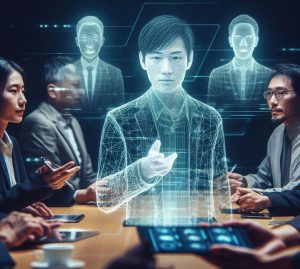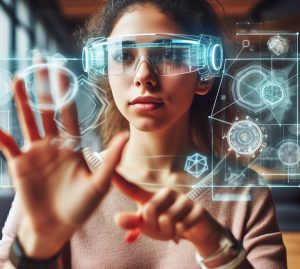Augmented reality technology can have a significant impact on various aspects of life, such as education, entertainment, work, health, and social interaction. Here are some examples of how AR can affect people’s behavior and experience in different domains:
- Education: AR can enhance learning outcomes by providing immersive and interactive content that can help students visualize and understand complex concepts, such as anatomy, astronomy, or chemistry. AR can also enable remote learning and collaboration by allowing students and teachers to interact with each other and with virtual objects in a shared environment. For example, HoloAnatomy is an AR app that helps medical students learn anatomy from their own homes using HoloLens.
- Entertainment: AR can create engaging and fun experiences that can enrich people’s enjoyment and creativity. AR can also provide access to cultural events and experiences that may be otherwise unavailable or inaccessible, such as museums, concerts, or historical sites. For example, Google’s AR search allows users to see 3D animals in their living room, and Spatial enables users to collaborate with avatars of remote colleagues as though they were in the same room.
- Work: AR can improve productivity and efficiency by providing useful information and guidance for various tasks and activities, such as navigation, training, maintenance, or design. AR can also help to reduce the environmental impact of work by enabling virtual meetings and reducing the need for travel. For example, AR can help workers to repair a machine by overlaying instructions and diagrams on their glasses, or it can help architects to visualize and modify a building plan in real time.
- Health: AR can enhance health and well-being by providing support and assistance for various health-related issues, such as diagnosis, treatment, rehabilitation, or prevention. AR can also help to improve the quality of life and the emotional state of patients and caregivers by providing entertainment, education, or social interaction. For example, AR can help doctors to perform surgery by showing them vital signs and anatomical structures on their glasses, or it can help patients to cope with pain or anxiety by distracting them with games or stories.
- Social interaction: AR can influence how people interact with each other and with their environment by adding or changing the appearance or behavior of real or virtual objects or people. AR can also help to overcome some social barriers or challenges, such as distance, time, or accessibility, by enabling communication and connection with others across the world.
5/5



